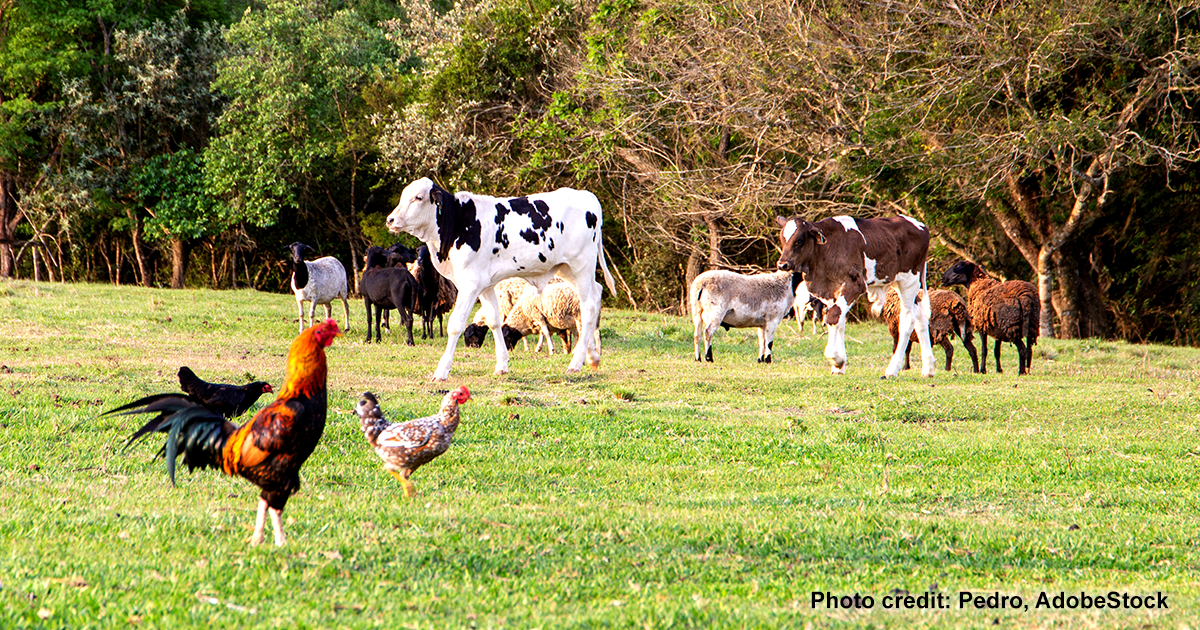
May 08, 2024 Bird Flu Spreading to Farmed Mammals in the US
WellBeing International has published four articles on the Highly Pathogenic Avian Influenza Virus (HPAIV) in the past fourteen months. Science has published seven news stories on bird flu this year. The most recent story (May 1, 2024) was titled “Scientists Call New Measures to Control Bird Flu in Cows a ‘Drop in the Bucket’.”
Public health officials say the risk of HPAIV, or bird flu virus, is currently low. However, the events of the past twelve to twenty-four months indicate that the risks of a bird flu pandemic are increasing. An international survey of scientists conducted between February and June 2023 revealed that 79% of the 187 respondents from 57 countries believed that influenza viruses are the most likely pathogen to cause the next global pandemic. The Observer, a British weekend newspaper, published an article about this survey on Saturday, April 20, 2024.
The current HPAIV virus strain has been spreading globally in an unusual way. Typically, avian influenza pathogens are tolerated by wild bird populations and disappear during the summer. However, this current strain has caused a high number of wild bird deaths, infecting at least 99 species, which is a record. Moreover, it continues to infect farmed birds during the summer. In Europe, HPAIV has become endemic in wild birds, and is causing bigger and bigger outbreaks in farmed birds, with sporadic transmission to humans. The situation in Europe may indicate what lies ahead for other countries.
HPAIV has infected a wide range of mammals. Mink farms in Europe experienced outbreaks of HPAIV in 2022. Indications were that the virus was spreading from mink to mink. In North and South America, the virus has infected and killed large numbers of seals and sea lions. It is also likely that the virus has spread from one marine mammal to another. In North America, the virus has now been detected in dairy cows. It is unclear how widespread the dairy cow infection is. However, preliminary studies found viral fragments of bird flu in a majority of the tested commercial milk samples and in wastewater samples from eighteen states.
So far, human infections with the virus appear to be caused by relatively close human interactions with infected animals. Some avian flu infections in humans have been reported, but the source of the infection was unknown. Human-to-human spread of bird flu is thought to be rare and non-sustained. However, the bird flu virus is a master of mutation. There is fear that the virus will find its way into farmed pigs, where the chances of mutation would increase, leading to new variants that could spread to humans. Currently, less than 900 people worldwide have been infected with HPAIV since it first appeared. However, the mortality rate for highly pathogenic forms of avian influenza is over 50%.
The current situation highlights issues related to bird flu risk assessment. This virus is highly adaptable and mutates quickly. The danger is that it will acquire a mutation that will enable it to spread from human to human. The fact that HPAIV has infected mammals such as farmed minks, marine mammals in the wild, and dairy cows in the USA has increased its risk profile. Consequently, the risk of HPAIV infecting humans must be higher now than when the virus first emerged in 1996. As Dr. Druv Khullar of Weill Cornell Medicine writes in the New Yorker on May 5, 2024, the current US approach to bird flu has an “unsettling resonance” with the early days of the COVID-19 pandemic.
National and international health and agricultural authorities should take a more proactive approach to track the spread of bird flu. Such an approach would include conducting and coordinating widespread testing, collecting and analyzing data, and recording the results in a central, open repository. If bird flu does start spreading widely from human to human, it will probably be too late to control outbreaks and prevent a global pandemic. The World Economic Forum (WEF) estimates that the COVID-19 pandemic has cost the world $11 trillion so far, with a future loss of $10 trillion in earnings. Prevention is a much cheaper option!
Dr. Hope Ferdowsian is president of Phoenix Zones Initiative, a global nonprofit that uses public health expertise and data to solve problems for people, animals, and the planet. Her public health expertise covers climate change, hunger, chronic disease, emerging infectious diseases, poverty, forced human migration, and human conflict. She was named Humanitarian of the Year by the American College of Physicians in 2017.


